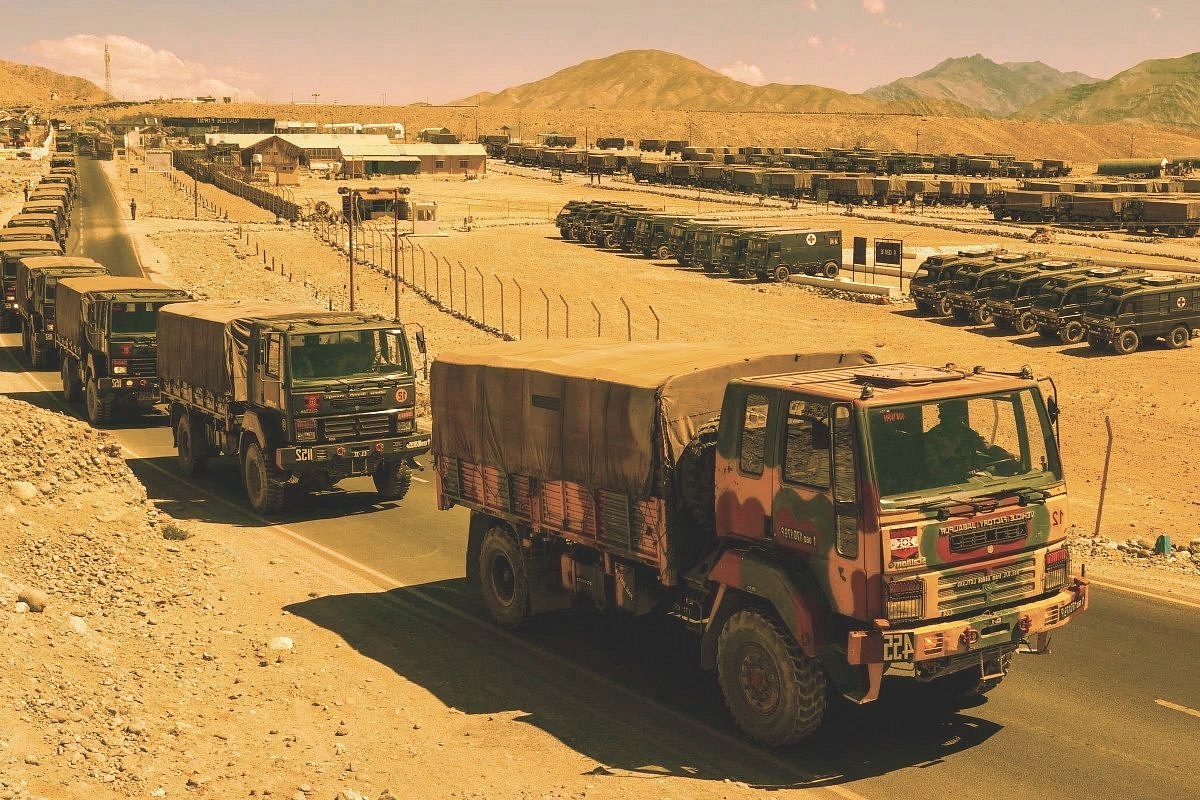News Brief
Ladakh: China ‘Upset’ With India’s Rapid Infrastructure Buildup, Blames It For Tensions Along The LAC
- Areas along the border, which were either inaccessible for Indian troops, or took days to reach, are now only hours away.
- This is making China uncomfortable, experts believe.

An Indian Army convoy in Ladakh. (@jaywankhadejrw/Twitter)
India has continued to build large-scale infrastructure in Ladakh at a rapid pace, despite threats from China along the Line of Actual Control (LAC).
If anything, China’s efforts at salami-slicing Indian territory and the naked aggression in the Galwan Valley, coupled with its repeated threats, have only helped increase the pace of road construction in the remotest parts of Ladakh.
On 12 October, just hours before the seventh round of military talks between India and China began, Defence Minister Rajnath Singh had inaugurated 44 bridges built by the Border Roads Organisation in areas along India’s border.
Of these 44 bridges, at least 30 are on routes leading to the LAC with China. Eight of these 44 bridges have come up in Ladakh alone. Many of these are 'Class 70' bridges, which allow the movement of heavy military vehicles including main battle tanks and armoured personnel carriers of the Army.
A day later, the Chinese have blamed India’s infrastructure buildup as the “root cause” for the tensions along the LAC in eastern Ladakh.
For decades, experts say, China has been building roads along the LAC to improve the movement of its troops and has built up the capability and the infrastructure needed to flood in troops from its bases in the interior to the border with India using this road infrastructure.
Until recently, this gave China a significant military advantage over India, which could move troops only at a much slower pace.
With India now building infrastructure along the western frontier at a rapid pace for the past few years, this advantage is getting eroded, China watchers say. With the infrastructure gap along the LAC narrowing, China’s actions of salami-slicing Indian territory are being increasingly challenged.
Areas along the border, which were either inaccessible for Indian troops, or took days to reach, are now only hours away.
This is making China uncomfortable, experts believe.
“For a while, the Indian side has been stepping up infrastructure building...along the border with China. This is the root cause of tensions,” Lijian Zhao, a Chinese Communist Party spokesperson, said on 13 October.
India, however, has rejected the claim saying all the roads and bridges it is building are coming up on its side of the border. It has also cited the continued buildup of infrastructure by China in contested areas, including the laying of optical fiber network and the construction of roads, to dismiss this claim.
India’s rapid infrastructure buildup is likely to continue.
Speaking after the inauguration of 44 bridges on 12 October, Director- General of BRO, Lieutenant-General Harpal Singh said India was working on around 40-50 more bridges in Ladakh.
These bridges, he said, will be ready in the next few months.
The bridges coming up in Ladakh, he said, will ensure “speedier movement of our strategic forces” during tensions in the region.
The renovation work on the 255-km Darbuk-Shayok-Daulat Beg Oldie road, critical for connectivity in north eastern Ladakh (called sub-sector north by the Army), is also likely to be complete by the end of October.
Between 2008 and 2014, as much as 7,270 metres of bridges and 3,610km of roads were built by India. Between 2014 and 2020, as much as 14,450 metres of bridges and 4,764kms of roads have been built by India in the border areas.
While only one tunnel was built between 2008 and 2014, six have been built between 2014 and 2020. At least 19 major tunnels are under construction.
The speed of road surfacing has increased from 170 km per year between 2008 and 2017 to 380 km per year between 2017 and 2020.
Support Swarajya's 50 Ground Reports Project & Sponsor A Story
Every general election Swarajya does a 50 ground reports project.
Aimed only at serious readers and those who appreciate the nuances of political undercurrents, the project provides a sense of India's electoral landscape. As you know, these reports are produced after considerable investment of travel, time and effort on the ground.
This time too we've kicked off the project in style and have covered over 30 constituencies already. If you're someone who appreciates such work and have enjoyed our coverage please consider sponsoring a ground report for just Rs 2999 to Rs 19,999 - it goes a long way in helping us produce more quality reportage.
You can also back this project by becoming a subscriber for as little as Rs 999 - so do click on this links and choose a plan that suits you and back us.
Click below to contribute.
Latest